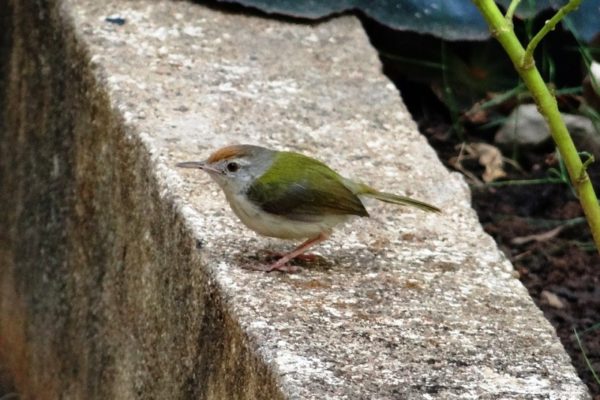Using genetic and fossil data, we have reconstructed the evolutionary “family tree” for songbirds.
The songbirds that are common in gardens all across the world have a surprisingly distant origin. They all evolved from a common ancestor that emerged from what is now Australia around 24m years ago. How they managed to leave this isolated part of the world and spread all over the planet has long been a mystery to scientists. But a new study suggests they began spreading just as the islands in and around Indonesia were being formed, creating a pathway for them to cross what had previously been thousands of kilometres of open ocean.
Songbirds are a tremendously diverse group of small perching birds, made up of over 5,000 known species distributed across the world. Common examples include the European robin (Erithacus rubecula) and the North American song sparrow (Melospiza melodia). Together, songbirds account for almost half of all bird species alive today.
Although fossils of birds are rare, the ancestor of all songbirds is thought to have originated in Australia, at a time when the Australian landmass was separated from all other land by a vast ocean in all directions. So, despite the birds’ extensive evolutionary spread, it remained unclear how this diverse and cosmopolitan family arose from a single ancestral species on an isolated continent.
However, a recent study published in the journal Nature Communications sheds new light on this question. Using genetic and fossil data, the authors reconstructed the evolutionary “family tree” for songbirds. They then linked this to information on different species’ geographic locations to understand how early songbirds spread between different continents over the course of millions of years.
This confirmed that songbirds originated in Australia just over 30m years ago. But the most eye-catching finding is that songbirds started to spread out of Australia much more recently than previously thought. This process appears to have started approximately 24m years ago, at the same time as the formation of Wallacea, a group of islands bridging the ocean-filled gap between Australia and Asia. So this may explain how songbirds were able to leave Australia and radiate across the rest of the world, by island-hopping their way to Asia.
Secrets in the DNA
To gain these novel insights, the researchers first collected DNA from many songbird species across the world. DNA molecules are the building blocks of life and bear the imprint of our evolutionary past. Close relatives tend to have more similar DNA to each other than to distant relatives. So by comparing DNA between songbird species that are related by different amounts, it is possible to reconstruct their evolutionary past and generate a family tree for the entire songbird group.
By mapping the geographic location of living species onto this family tree, the authors were then able to reconstruct where and when new songbird species evolved. The first songbirds originated in the landmass that would eventually become Australia. More surprisingly, though, the first major burst of evolution within songbirds coincided with a period of tectonic collision when islands began forming in the waters north of Australia. This provided the first land link between Australasia and the south-eastern tip of Asia (Sundaland).
Deep ocean dotted with islands separates Australia and Asia Maximilian Dörrbecker/Wikimedia Commons, CC BY-SA
These novel insights have at least three interesting implications. The first is that it resolves the longstanding question of how and when songbirds arrived in Asia. Previous attempts to date the spread of the birds from Australia pointed to a much earlier time, when the landmass was isolated by thousands of kilometres of open ocean.
We now know that the islands of Wallacea provided the first plausible corridor out of Australia, resulting in waves of songbird expansion through Asia to the rest of the globe. This colonisation of previously uninhabited regions seems to have then triggered the evolution of many new songbird species, as the group began to adapt to these novel environments and habitats.
Game of chance
This leads to the second important conclusion: the role of chance in evolution. Paleontologist Stephen J. Gould argued that if the tape of life were rewound and allowed to run again from the start, chances are we would see a very different set of evolutionary outcomes. Features of songbird evolution appear to support this message. Without the chance collision of two tectonic plates millions of years ago, songbirds may have never left Australia and the world’s garden bird feeders may now be playing host to a very different set of species than they do today.
The third and perhaps most striking conclusion is that the common ancestor of all modern songbird species is likely to have lived just over 30m years ago. In evolutionary terms, this is surprisingly recent, especially compared to the probable age of the ancestor of all birds (about 95m years). When you consider that songbirds account for over half of all bird species on Earth (over 5,000 species), the relatively recent origins of songbirds mean they evolved into new species at an even faster rate than previously thought.
By resolving these issues, the study has also set the stage for new and important questions about evolution. Perhaps the most intriguing question now is why a once-small group of Australian songbirds went on to become such a diverse and widespread component of life on Earth.






Leave a reply